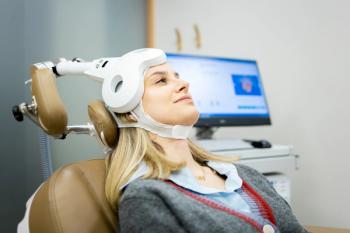
- Psychiatric Times Vol 26 No 11
- Volume 26
- Issue 11
What “Meaningful Use” of Electronic Health Records May Mean to Psychiatrists
With billions of dollars for electronic health record (EHR) technology purchases hanging in the balance, psychiatrists need to be paying attention to the Department of Health and Human Services (HHS) deliberations on the definition of “meaningful use.”
With billions of dollars for
Those grants are available for 5 years, and if obtained starting in 2011, they could amount to as much as $64,000 per practice for psychiatrists whose patient mix is at least 30% Medicaid recipients. That figure falls to $44,000 for physicians who cannot meet the Medicaid percentage and who see Medicare patients, with no specific percentage of the latter being designated.
There is also a penalty for physicians who do not meet the meaningful use definition. It comes into play after 2016; the Medicare fee schedule for professional services is reduced by 1% in 2015, by 2% in 2016, by 3% for 2017, and by between 3% to 5% in subsequent years.
The grants were authorized by the
The ARRA gave HHS some guidelines as to what the meaningful use definition should include. The overriding requirement is that a physician be able to exchange certain categories of patient data electronically with other providers and to report quality measures to the HHS and Centers for Medicare and Medicaid Services (CMS).
Complying with a meaningful use definition may have some general and specific challenges for psychiatrists. To begin with, it looks likely that all physicians would have to use computer physician order entry (CPOE) for all patients. In 2011, CPOE would have to perform certain basic tasks. For example, it would need to be able to implement drug-drug, drug-allergy, drug-formulary checks; maintain an up-to-date problem list of current and active diagnoses; and generate and transmit permissible prescriptions electronically. In addition, certain quality measures would have to be reported to the CMS. Those would include, on the basis of the policy committee’s final recommendations, percentages of:
• Diabetic patients whose glycosylated hemoglobin levels are under control
• Hypertensive patients whose blood pressure is under control
• Patients with dyslipidemia whose LDL levels are under control
• Smokers to whom smoking cessation counseling and other measures are offered
At meetings with HHS officials this summer, and in comments, the
It is not that quality measures for psychiatrists do not exist. They do. The
According to Hao Wang, PhD, deputy commissioner, chief information officer, office of mental health, state of New York, the state weeds through Medicaid data for indications that psychiatrists at Article 31 hospitals may be outside the boundaries of good practice in 2 areas in which the state has developed quality indicators: polypharmacy and cardiometabolic syndrome indicators. Psychiatrists who appear to need some help in those 2 areas are required to report to the state office of mental health to ensure they are improving their stats. Wang suggests that those 2 quality indicators have utility beyond psychiatrists and could be used by HHS if it wanted to make its quality measures reporting definition more relevant to psychiatric practice.
Wang stated what everyone already knows: that psychiatrists-and physicians more broadly-have not exactly flocked to EHRs. But psychiatrists may have a particular disincentive, Wang explained, “because they can’t find a good behavioral health care product.” He added that hospitals are more concerned about patients with physical conditions, because they generate more revenue. And EHR vendors have responded to that by producing systems that have little utility for physicians who see high percentages of patients with mental health conditions.
Articles in this issue
about 16 years ago
November 2009 Table of Contentsabout 16 years ago
Depression During Pregnancyabout 16 years ago
Living the Questions: Cases in Psychiatric Ethicsabout 16 years ago
Medical Educationabout 16 years ago
Current Clinical Practice in Asperger Disorderabout 16 years ago
The Cellular and Molecular Substrates of Anorexia Nervosa, Part 1about 16 years ago
Tarasoff Reduxabout 16 years ago
The Case of Factitious Disorder Versus Malingeringabout 16 years ago
Firearms and Mental IllnessNewsletter
Receive trusted psychiatric news, expert analysis, and clinical insights — subscribe today to support your practice and your patients.













